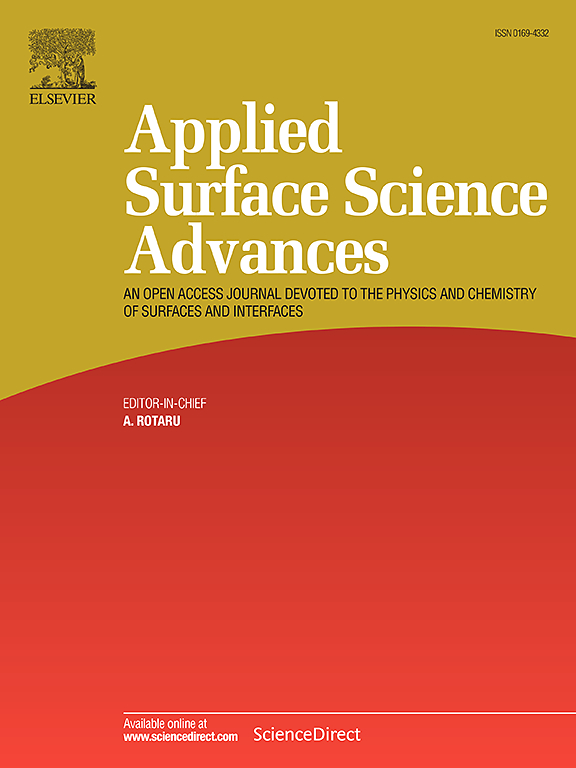Synthesis of a novel highly active single-atom nanozyme Cu-N-C with high surface area as a laccase-mimicking catalyst for the efficient catalytic aerobic oxidative synthesis of pyridines and quinazolinones at room temperature
IF 7.5
Q1 CHEMISTRY, PHYSICAL
引用次数: 0
Abstract
Nanozymes currently face challenges regarding their structure and efficiency compared to natural enzymes. Single-atom nanozymes (SAzymes) enable the optimal utilization of metal atoms and the capability to surpass intrinsic limitations. Herein, we synthesized a novel laccase-mimicking nanozyme based on copper single atoms anchored on N-doped carbon (Cu-N-C) using a precursor mixture of 2-methylimidazole, zinc nitrate, and copper(II) nitrate. The synthesized SAzyme was subjected to various characterization techniques, including Fourier transform infrared spectroscopy (FT-IR), High-resolution transmission electron microscopy (HRTEM), X-ray diffraction (XRD), Transmission electron microscopy (TEM), Brunauer-Emmett-Teller (BET), Inductively coupled plasma optical emission spectroscopy (ICP-OES), Scanning electron microscopy (SEM), and Energy-dispersive X-ray spectroscopy (EDX). Additionally, the Cu-N-C SAzyme, featuring spherical particles, exhibited a mesoporous structure with a high surface area of 321.14 m2/g as measured by BET, an average pore size of 1.29 nm, and a pore volume of 1.25 cm3/g. Cu-N-C combines the benefits of heterogeneous catalysts, such as easy separation and reusability, with those of homogeneous catalysts, including high activity and reproducibility. We report the first application of a Cu-N-C/DDQ/O₂ cooperative catalytic system for the efficient oxidation of 1,4-dihydropyridines to pyridines (85–96 % yield) and 2,3-dihydroquinazolinones to quinazolinones (83–96 % yield) in water/acetonitrile as a solvent at room temperature.
合成一种新型高活性、高表面积单原子纳米酶Cu-N-C,作为漆酶模拟催化剂,在室温下高效催化吡啶和喹唑啉酮的有氧氧化合成
与天然酶相比,纳米酶目前在结构和效率方面面临挑战。单原子纳米酶(SAzymes)使金属原子的最佳利用和超越内在限制的能力成为可能。本文采用2-甲基咪唑、硝酸锌和硝酸铜的前驱体混合物,合成了一种基于铜单原子锚定在n掺杂碳(Cu-N-C)上的新型漆酶模拟纳米酶。对合成的SAzyme进行了各种表征技术,包括傅里叶变换红外光谱(FT-IR)、高分辨率透射电子显微镜(HRTEM)、x射线衍射(XRD)、透射电子显微镜(TEM)、布鲁诺尔-埃米特-泰勒(BET)、电感耦合等离子体光学发射光谱(ICP-OES)、扫描电子显微镜(SEM)和能量色散x射线光谱(EDX)。Cu-N-C SAzyme为球形颗粒,具有介孔结构,BET测得其比表面积为321.14 m2/g,平均孔径为1.29 nm,孔体积为1.25 cm3/g。Cu-N-C结合了多相催化剂的优点,如易于分离和可重复使用,以及均相催化剂的优点,包括高活性和可重复性。本文首次应用Cu-N-C/DDQ/O₂协同催化体系,在室温条件下以水/乙腈为溶剂,将1,4-二氢吡啶高效氧化为吡啶(产率85 - 96%),2,3-二氢喹唑啉酮高效氧化为喹唑啉酮(产率83 - 96%)。
本文章由计算机程序翻译,如有差异,请以英文原文为准。
求助全文
约1分钟内获得全文
求助全文

 求助内容:
求助内容: 应助结果提醒方式:
应助结果提醒方式:


